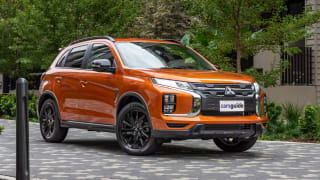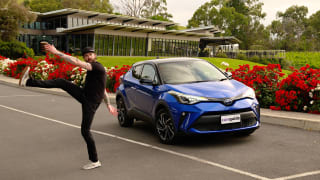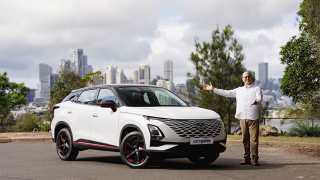From $25,990 before on-road costs, the Seltos S represents compelling buying, and not just among similar small SUV autos like the versatile Honda HR-V VTi (–$500) and bestselling but ancient Mitsubishi ASX ES (also a tenner under $26,000), as well as the exxier Toyota C-HR 2WD, Mazda CX-30 G20 Pure (both +$4300 apiece) and Nissan Qashqai ST (+$4600).
Thanks to some deft design and packaging, subjectively the Kia feels just about large enough to play in the medium SUV league, alongside favourites such as the Mazda CX-5 Maxx 2WD (+$7290). And while, stood side-by-side, the latter’s larger proportions are plainly obvious, its cargo capacity is just nine litres more than the Seltos’ 433L.
As with all of the above, the base Seltos is front-wheel drive, in this case employing a 2.0-litre four-cylinder naturally aspirated petrol engine and box-fresh continuously variable transmission (CVT) automatic combination. No manual is available, sadly.

The S is very well equipped for an opener, boasting an 8.0-inch touchscreen multimedia display, Apple CarPlay/Android Auto connectivity, cruise control, automatic on/off headlights, reverse camera, rear parking sensors, autonomous emergency braking (AEB) with vehicle and pedestrian detection, forward collision warning, lane-keep assist, driver attention alert and 16-inch steel wheels with a space-saver spare tyre.
And let’s not forget Kia’s seven-year/unlimited kilometre warranty.
We advise ticking the $1000 'Safety Pack' option, since it ushers in worthwhile goodies like adaptive cruise control, electric folding exterior mirrors, a driver’s side auto up/down window, cyclist collision avoidance braking as part of a more-sophisticated AEB system, larger rear disc brakes and an electronic park brake with hill-hold. Bargain.
However, there are some spec anomalies. You’ll need the $28,990 Sport for digital radio and alloy wheels (though it does also introduce a nicer full-colour 10.25-inch touchscreen with sat-nav); only the $32,490 Sport+ onwards brings a parcel shelf/cargo area cover (!), blind-spot alert, rear cross-traffic avoidance and remote unlocking, while rain-sensing wipers, wireless phone charging and any sort of front LED lighting are the preserve of the GT-Line AWD flagship, from $41,400.

The latter includes a more powerful 1.6-litre turbo with all-wheel drive, though it’s also a $2500 option on the aforementioned Sport+; note that also bags a multi-link independent rear suspension system in place of the more-rudimentary torsion beam arrangement in FWD models. Metallic paint lightens your bank account by another $520.
Do you need all that extra gear? The upper Seltos’ play in serious medium SUV territory… highlighting just how much car the base S actually offers.

























